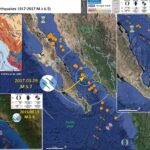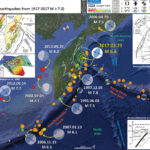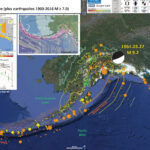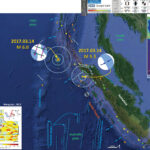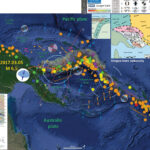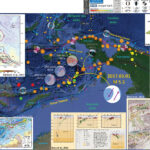There was an earthquake yesterday in the Gulf of California nearby a series of earthquakes that happened in 2015 and earlier in 2013. The 2017 and 2013 earthquakes are happening along a fault that forms the Carmen Basin and the…
Earthquake Report: Kamchatka!
This earthquake happened last night as I was preparing course materials for this morning. Initially it was a magnitude 6.9, but later modified to be M 6.9. This earthquake happened in an interesting region of the world where there is…
Good Friday Earthquake 27 March 1964
In March of 1964, plate tectonics was still a hotly debated topic at scientific meetings worldwide. Some people still do not accept this theory (some Russian geologists favor alternative hypotheses; Shevchenko et al., 2006). At the time, there was some…
Earthquake Report: Bougainville and Solomons
In the past couple of weeks, there were some earthquakes in the equatorial western Pacific. Here are the USGS websites for the two largest earthquakes in the two regions. 2017.03.04 M 6.1 2017.03.19 M 6.0 The M 6.1 was a…
Earthquake Report: Sumatra!
There were two interesting earthquakes near the northern tip of the Island of Sumatra whilst I was off on a field trip with some HSU geology students. So, I think it prudent to review these earthquakes now. These earthquakes happened…
Earthquake Report: Cape Mendocino Region
We just had an interesting earthquake in the region of the Mendocino triple junction. Recent earthquakes in this region show different fault plane solutions, owing to complexity of this area. In 1983 there was an earthquake ~10 km to the…
Earthquake Report: New Britain
We just had an earthquake with a USGS magnitude of M 6.5 along the subduction zone formed by the convergence of the Solomon Sea plate on the south and the South Bismarck plate on the north. Here is the USGS…
Earthquake Report: Banda Sea
Earlier this week there was a moderate earthquake along a strike-slip fault that appears to adjoin the Banda/Timor/Java Arc with New Guinea. This strike-slip fault appears to cross oblique to the subduction zone that forms the Timor Trench to the…
Earthquake Report: Alaska
We had an earthquake a few days ago along the Cook Strait west of Anchorage, Alaska. This earthquake happened nearby a couple earthquakes from the past 2 years that have similar senses of motion along faults that seem to be…

